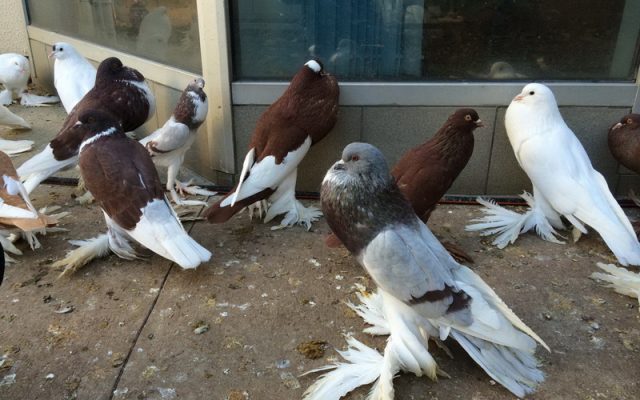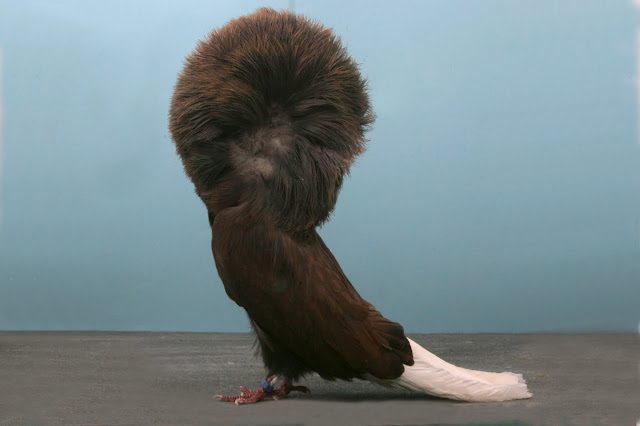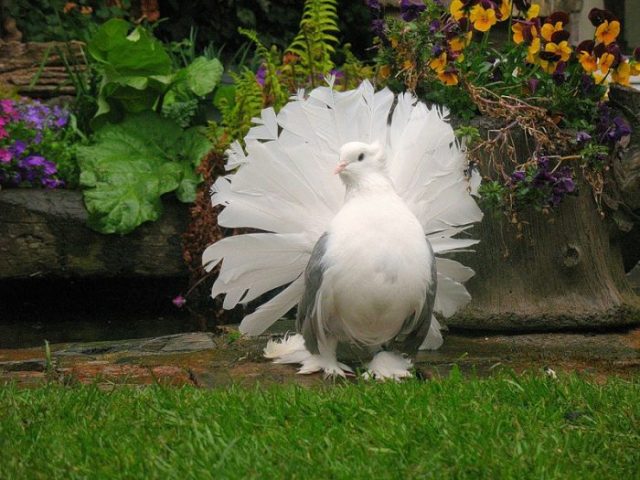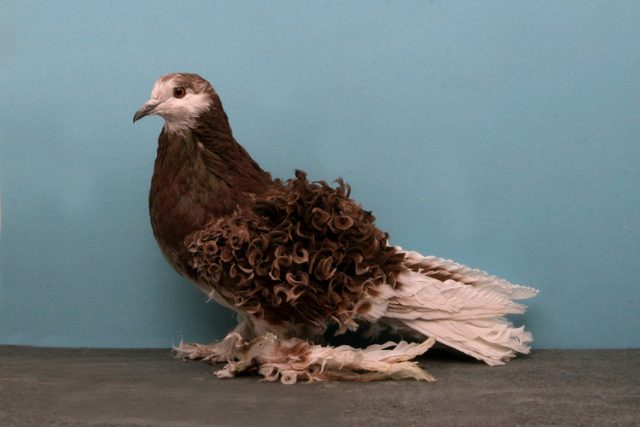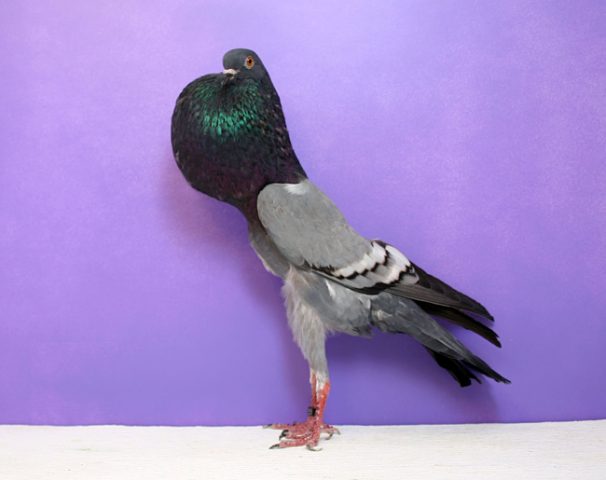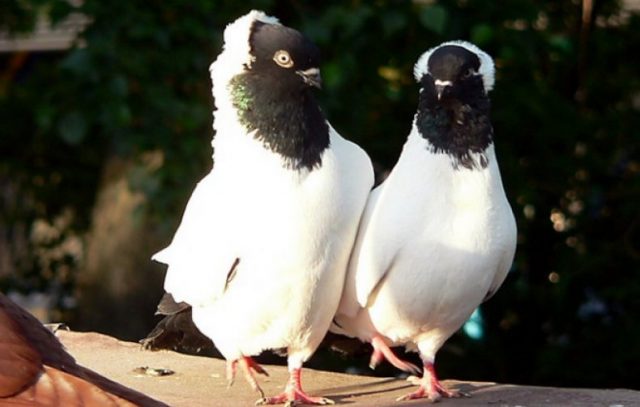Content
Pigeons are such unpretentious birds that they are found everywhere in a wide variety of natural conditions, with the exception, perhaps, only of the Arctic and Antarctica. In the pigeon family, it is customary to distinguish about 42 genera and more than 300 varieties. Decorative pigeons are probably the most numerous group of breeds, although today they have minimal economic use. They are bred mainly for the sake of aesthetic pleasure.
Features of decorative pigeons
The pigeons of Australia and South Asia are especially diverse in species and breeds. But these birds are adapted exclusively to warm and even hot climates and are not suitable for keeping in the climatic conditions of Russia. This article will focus primarily on decorative breeds of pigeons that survive well and breed in the middle lane. They are also distinguished by a great variety, but at the same time relative unpretentiousness to the conditions of detention.
Of course, the very name of the group of pigeons - decorative, implies the fact that they are distinguished by originality in appearance. It can be a bright color and unusual plumage pattern, exterior features, or an unexpected shape and structure of feather growth.
Unlike their wild relatives, many of the decorative pigeons are ideally suited for enclosure keeping, since they do not have the best flying qualities. Some breeds have practically forgotten how to fly high. Although sometimes some flying breeds, characterized by certain decorative elements, are ranked as decorative pigeons.
The color of decorative pigeons can be the most unexpected and varied: from pale green to bright red and brown. Their size can also vary greatly, from very tiny, as tall as a lark, to large, almost the size of a chicken.
Many color variations are generally known within each breed. Therefore, the color shade rarely served as an identification mark of a particular pigeon breed.
Decorative pigeons are usually shy, so caring for them should be very gentle and careful.
The best breeds of decorative pigeons
The names of the breeds of decorative pigeons often came from the names of the countries or settlements where this or that variety was bred. Sometimes the name reflected the relationship between the external signs of a pigeon and the traits of the character in whose honor it received its name. So often swallows, bullfinches, peacocks, etc. appeared in the names of pigeon breeds.
Jacobin
In European countries, it is better known as a wig pigeon. It got its name thanks to a kind of wig - rosettes of almost vertically growing feathers, creating a magnificent outfit on both sides of the lower part of the head.
This lush “collar” often covers most of the pigeon's face and limits the normal view of the area. Because of this, the flying abilities of the Jacobins are severely limited. They fly hard and very slowly. The rest of the birds are characterized by a proportional build with long legs and a thin tail. The plumage color can be white, black or variegated.
Jacobins look great at exhibitions, so they are very popular. But they differ in some timidity and delicacy. Despite the fact that they perfectly sit on eggs and feed chicks, they need special drinkers and feeders. During the hatching period, the fluffy collar is usually trimmed so that it does not interfere too much with the life of the birds.
Peacocks
One of the most popular and common decorative pigeon breeds. The appearance of the pigeon immediately suggests that this name was given to this breed for a reason. In the tail of birds, you can count up to forty feathers, which the dove spreads like a fan in an excited state and becomes like a peacock. The tips of the tail feathers are beautifully fluffed. In general, they grow vertically, but the outermost feathers may even touch the ground.
The chest of peacock pigeons protrudes slightly forward, forming a proud posture. The head is small, oval in shape, there are no ornaments in the form of "forelocks" on it. The body is rather short with small legs, usually without feathers, and the neck is long.
Most often, the white color of peacock pigeons is found, which makes it possible to use these birds during all kinds of special events and weddings. It is this breed of pigeons that is usually depicted on advertising posters as the "bird of peace". But there are other colors of peacock pigeons: yellow, brown, reddish and black.
Peacock pigeons are very unpretentious in content, they fulfill their parental duties well. In addition, they are fertile, which is a valuable breeding trait. Peacock pigeons fly very beautifully and gracefully. They have a calm, calm character.
Curly or Wavy
Sometimes pigeons of this decorative breed are called astrakhan. It is difficult to confuse them with representatives of any other breeds, due to the unusual pattern of highly curled feathers on the upper surface of the wings and on the legs. The feathers are so tightly curled that they appear lacy and artificial. True, flying qualities cannot but suffer from such pretentious decorative elements - pigeons prefer to walk and run more than fly. Although the rest of the birds have the usual constitution of a standard pigeon. Plumage color can be solid or spotted. But a distinctive feature of the breed, in addition to curly plumage, is a white forehead. The tail is also most often lighter in color.
Blowers
Decorative pigeons, which are also difficult to confuse with any other breed of birds. The pigeons got their original name for their exorbitant size, like a bloated goiter. Sometimes, because of him, the head is completely invisible. Among the blowers, there are several varieties:
- Brno blowers - originally from the Czech Republic, have a vertically elongated body with long and bare legs. Birds move with support not on the whole paw, but as if on tiptoe, leaning only on the fingers.
- Pomeranian blowers - one of the largest breeds of decorative pigeons, reaching a height of 50 cm. Long legs are decorated with shaggy elegant feathers.
- Marchenero - in these pigeons, the body is set low, so the crop hangs down and forward. The tail, meanwhile, is directed almost vertically downward. The breed was bred in Seville.
The plumage color can be of a wide variety of shades.
Barb
The decorativeness of this breed may seem controversial to some. It belongs to the subgroup of warty pigeons. The birds are distinguished by a prominent forehead and short beak. The characteristic features of the breed are peculiar skin growths around the eyes and beak. In addition, pigeons of this breed do not have a variegated color. They can have different shades of plumage, but always of a uniform color.
Saxon priest
As the name suggests, this breed of decorative pigeons originated in Saxony.It has impressive decorations of long feathers on its paws and two tufts on its head that blend seamlessly into the collar on its neck. This unique plumage slightly resembles a monk's hood, which explains the name of the breed. Moreover, the forehead of all pigeons of this breed, regardless of the general color, always remains white. However, the breed does not differ in special brightness of plumage, usually pigeons are white, gray or brown.
German monk
The name of the breed is a bit like the previous one, all thanks to the same feather hood in the back of the head. True, the feathers are very short, and the paws, unlike the Saxon priest, are completely devoid of plumage.
But on the other hand, this breed is considered quite ancient, its roots go back to the 17th century. Birds do not know how to fly high at all, but they always fly up at the sight of a stranger. By doing this, they are able to lure the pigeons after them. This feature of the German monk was used to steal birds from other dovecotes. The color of pigeons also gives them a similarity to monks - black and white shades prevail in the plumage.
Bullfinch
The breed of decorative pigeons originates from Italy, but received its final formation in Germany and England. The name was given to the birds for the copper color of the body, which is unusual for pigeons, with shiny, greenish overflow, darker wings. Has normal proportions, large size and lively cheerful character. Differs in unpretentious content.
Bohemian cosmonaut magic swallow
An ornamental breed with such a complex name was developed in the Czech province, in Bohemia. Pigeons are rather large in size with a proportionally developed body and richly feathered legs. But their most important distinguishing feature is the incredibly beautiful color of the plumage. Usually it consists of only two contrasting shades, but mixed in a checkerboard pattern. The exact same pattern is repeated in the plumage on the paws.
Bukharian or Uzbek
The Bukhara breed of pigeons has a long history. Currently, several varieties have been obtained from it, which are most often called Uzbek. These pigeons belong to the transitional flight-decorative group, since they are famous all over the world for their amazing flying qualities. They are especially good at jumps, somersaults and other incredible tricks during the flight.
The body of Bukhara pigeons is rather large, the feathers are slightly curled. The paws are necessarily covered with feathers, sometimes quite long. There is one or even two forelocks on the head: above the beak and on the back of the head.
The plumage color can be anything, including variegated.
Pigeons of this breed have a rather lazy character. This leads to the fact that the birds are not too active in breeding and in incubating chicks. Therefore, their eggs are often laid for other more active and conscious pigeons.
Bow pigeons or seagulls
This decorative breed of pigeons can also be considered quite ancient. The birds have a small body size and a very short beak. Outwardly, they really look a little like seagulls. But the main distinguishing feature of this breed of pigeons is the presence in front, between the crop and the chest, a small decorative decoration of feathers, sometimes growing in all directions. Feathering is also common on the legs of gull pigeons. A crest may be present on the head, but this is not a mandatory sign of the breed.
The color of the plumage can be different, but the white birds look the most beautiful.
Bow pigeons have good flying abilities, and it was on their basis that several postal breeds were subsequently bred.
Keeping decorative pigeons
Pigeons are birds accustomed to living in flocks and at the same time living peacefully with each other.Their life expectancy in humans can be up to 20 years.
Considering that most decorative pigeon breeds are poorly adapted for flying, it is better to build an aviary for them with a small house inside. A special window for entry and exit of birds in size should be about 15-20 cm wide. The dovecote should be light and airy. Pigeons especially dislike dampness, darkness and musty air. In such conditions, they can start to get sick.
Perches are made in the form of shelves on the walls, fixed at different heights. Nest boxes are usually made of wood.
For the normal maintenance of decorative pigeons, the following sanitation rules must be observed:
- Drinking bowls and feeders must be regularly rinsed in running water at least 2 times a week.
- At least once a month, cleaning is done in the dovecote, cleaning, if possible, all litter from the room.
- Two or three times a year, the dovecote is necessarily treated with a disinfectant solution and general cleaning is performed.
- Sick birds must be isolated and treated.
Pigeons are usually fed with various crops. Wheat, peas or corn are considered the most suitable. To facilitate digestion, small pebbles, chalk and crushed eggshells are also added to the feeders.
In the winter and mating season, it is possible to add pumpkin seeds or sunflower seeds to the diet.
It is very important to constantly monitor that there is fresh water in the drinkers. Pigeons need a lot of water in hot summer weather. They love not only to drink, but also to swim in it.
Conclusion
Decorative pigeons, despite their minimal economic value, continue to be very popular and in demand among birdwatchers. Every year, several new breeds of decorative pigeons are bred in the world, which meet one or another request of poultry farmers.
